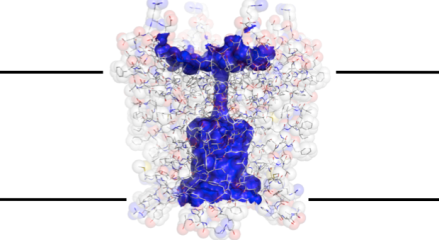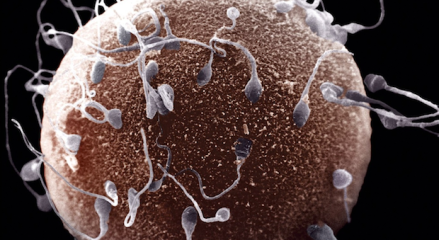Omega Current Channelopathies
In this post I will be continuing my series on the omega current. The omega current is a leak current that passes through the voltage-sensor domain (VSD) of mutated voltage-gated cation channels. Mutation of the VSD S4 helix can reveal a cryptic pore that allows ions (H+, Li+, K+, Rb+ and even guanidinium) to cross … Continue reading
The Omega Current
Mutation of voltage-sensor domains (VSDs) can sometimes lead to ions leaking across the membrane through the VSDs themselves. Ion conduction through the mutated VSD of the Shaker Kv channel was coined the “omega current” by Tombola, Pathak and Isacoff (Tombola et al., 2005). Many different mutations have been identified that result in current leaking through the VSDs of … Continue reading
Pores and Selectivity Filters
In this post I will be briefly introducing the classical ideas of ion conduction through membrane proteins. The idea of ion channels as selective pores in the cell membrane is very old but is now understood at atomic detail. So what is a channel? What does an ion conductive pore look like? Here, I will … Continue reading
Biochemical Data Constraining the S4 of Hv
In this post I will finish my series on alignments and homology models. Here, I will discuss three different biochemical studies of the voltage-gated proton channel (Hv) that help to delineate the boundaries of the S4 helix. First, I will discuss the structure of the coiled-coil, which limits where along the primary the sequence of … Continue reading
Is the S4 helix of Hv Short?
In this post, I will elaborate upon a statement I made in last week’s post. There, I discussed how important a proper alignment of the S4 helices in voltage sensor domains (VSDs) is for building accurate homology-based structural models of these domains. When discussing the potential alignments I stated that “since the different conformations of … Continue reading
The Problem of Aligning S4
Recently, a number of papers have come out that have used sequence homology to generate structural models of human Hv1 (Musset et al,. 2010; Ramsey et al., 2010; Wood et al., 2012). These models have then been used for docking and molecular-dynamics simulations to try to extract some mechanistic insight into the channel function. In … Continue reading
The Mechanism of Voltage Gating in Potassium Channels? – Part 2 Activation
OK, time for part 2. If you missed part 1 of this two post series check it out here. Just to recap, I am discussing the recent Science paper (April 13th issue) from the D.E. Shaw Research group, entitled “The Mechanism of Voltage Gating in Potassium Channels.” In this paper, Jensen et al. use their … Continue reading
The Mechanism of Voltage Gating in Potassium Channels? – Part 1 Deactivation
In this two part post I will discuss the recent Science paper (April 13th issue) from the D.E. Shaw Research group, entitled “The Mechanism of Voltage Gating in Potassium Channels.” In this paper Jensen et al. use their custom designed supercomputer Anton (named after Anton von Leeuwenhoek, the 18th century microscopist) to perform molecular dynamics … Continue reading
Hv Physiology: Human Male Fertility
The human voltage-gated proton channel Hv1 plays an important physiological role in male fertility in humans. Specifically it is integral for regulation of the internal pH of the sperm cell. The pH of the sperm cytoplasm is a major regulator of sperm cell motility, capacitation, hyperctivation and the acrosome reaction. Each of these processes are … Continue reading








